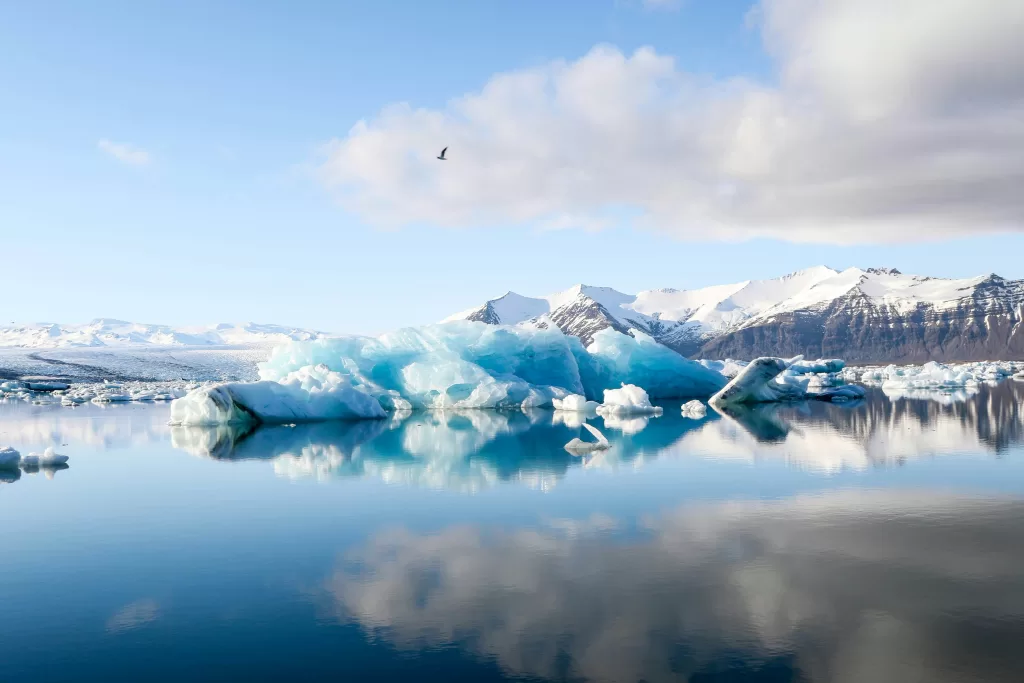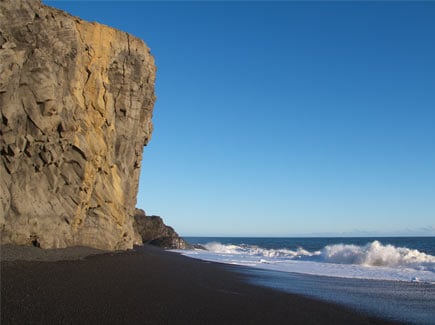Replete with icecaps and glaciers, steaming solfataras and spouting geysers, and much more, Iceland is a true Nordic gen that you simply must visit at least once in your life. The country is home to numerous geological wonders that you can explore on your Iceland tour package. However, before you can start planning your next vacation to Iceland, it is important to know what the best time is to travel to Iceland.
The Best Time to Travel to Iceland for a Perfect Vacation
To plan a picture-perfect break in the Nordic beauty that is Iceland, you first need to know the best time to visit Iceland. One of the many charms of Iceland is that you can visit the country at any time during the year, but it is your choice of activities that you want to do and the adventures you want to have that will help you decide what the best time to see Iceland is for you.
- The Peak Season
- Best Time to Visit Iceland for the Weather
- Exploring Iceland in the Summers
- Exploring Iceland in the Winters
- The Best Time to Visit Iceland to Explore Reykjavík
- The Best Time for Visiting Iceland for Birdwatching
- The Best Time for Visiting Iceland to Explore the Golden Circle
- The Best Time for Visiting Iceland for Hiking
- A Good Time to Go to Iceland for Ice Caving
- A Good Time to Go to Iceland to Witness the Northern Lights
- Best Time to Go to Iceland to Experience the Midnight Sun
The Peak Season
The months from June to August are the peak season in Iceland and this is when the country experiences the mildest weather and the most daylight. This is a good time to go to Iceland as most activities are available for tourists to enjoy. The winter months in Iceland are also becoming quite popular as people from across the world flock to the country to witness the Northern Lights.
Best Time to Visit Iceland for the Best Weather
Iceland is not as cold as you may think from its name, as the country enjoys a temperate climate throughout the year. However, it is also very likely for the weather to undergo drastic changes within the span of a day as well. If you want to experience the maximum sunlight during the day and are looking for the mildest weather, either June, July, or August may be the best month to visit Iceland for you. A shoulder month, like September or May, is the best month to go to Iceland for those who are looking for a quieter holiday, as the shoulder season usually has fewer crowds and the weather is also mild, though it may be a little more unpredictable as well.
On the other hand, if you want to enjoy crisp, snowy days, you might want to plan your trip for the winter months, which, including the shoulder months, last from October to April.
Exploring Iceland in the Summers
The summers are considered to be the best time to travel to Iceland among a majority of travellers because of the weather. The ample amounts of daylight are great for sightseeing and for partaking in all the activities that Iceland has to offer. The summers also have a lot of festivals that you can enjoy. Another reason why the summers may be the best period to visit Iceland is so you can plan a road trip amidst the mesmerising natural vistas that spread across the country. The summers are also a good time to explore the ethereal black sand Iceland beaches that dot the rugged coastline of the country.
Exploring Iceland in the Winters

With time, the winters are gaining a lot of popularity among travellers for the longer nights of the winter and the natural phenomenon of the aurora borealis. Despite Iceland being a year-round destination, there are fewer activities for visitors to enjoy during the winters, given the less daylight. The winters are also the best time to travel to Iceland to experience Northern Lights.
The Best Time to Visit Iceland to Explore Reykjavík
Reykjavík is a cultural and colourful city in Iceland that is known for its year-round festivals, including the New Year’s Eve celebrations. Reykjavík is the capital city of Iceland and houses a number of world-renowned attractions. The best time to see Iceland’s capital city again depends on what you plan to do during your visit. Most of the museums in the city are open throughout the year, as are the swimming pools, heated using geothermal power. However, the best time to travel to Iceland will depend on the specific events that you want to attend. For instance, the Iceland Airwaves are held in November, Cultural Night is in August, and the Secret Solstice is in June.
The Best Time for Visiting Iceland for Birdwatching
While any time is a good time to go to Iceland, most bird species are migratory and spend very little part of the year in the country, which means that there is indeed a certain period to visit Iceland that is best for birdwatching. In general, the best time for visiting Iceland is from mid-April to the end of June, when the most bird species can be spotted. However, if you want to spot puffins, the harlequin duck, barrow’s goldeneye, the gyrfalcon, or the Brünnich’s guillemot, the best season to go to Iceland will vary. Puffins can be best spotted from May to August and the harlequin duck during the winters. Barrow’s goldeneye can be spotted all year round around Lake Mývatn. The gyrfalcon is a fully protected species, so its exact breeding location is not given out, but in rare cases, it can be spotted around Lake Mývatn, Reykjavík, and around the Reykjanes Peninsula. The Brünnich’s guillemot or the thick-billed murre can be spotted from the end of Match to the end of July.
The Best Time for Visiting Iceland to Explore the Golden Circle
The best time to visit Iceland to experience the attractions of the Golden Circle is during the country’s shoulder season. However, it is important to state here that the Golden Circle is a great place throughout the year. In the winters, the landscapes are dusted with snow and frost, while the summers may seem a bit crowded. For those looking for a quieter time, the best time to visit Iceland is either during April and May or during September and October.
The Best Time for Visiting Iceland for Hiking
Hiking amidst the stunning trails across the beautiful mountains is one of the most unforgettable experiences that you can have in Iceland. Accessing the hiking trails of Iceland depends very much on the weather, which is why the best time to visit Iceland for hiking is between May and September. However, some of the hiking trails, high up in the mountains, may still be covered with snow during May. Plus, hiking across the highlands of Iceland is often limited based on the opening of the road that leads to the highlands post-winter. Normally, the road opens by mid-June. Another reason why the summers are the best time to see Iceland and its hiking trails is because you will have the most daylight to enjoy the outdoors.
A Good Time to Go to Iceland for Ice Caving
Exploring the surreal atmosphere of an ice cave is another great experience that awaits you in Iceland and the best time to visit Iceland to explore its ice caves is from the middle of November to the beginning of March. You can adventure in the Katla ice cave inside the Kötlujökull glacier or walk through parts of Vatnajökull, which is the largest glacier in Iceland. On the other hand, the second largest glacier in the country offers an ‘Into the Glacier’ experience where you can walk through a man-made tunnel into the depths of the glacier. You can also experience an ice cave at Perlan in Reykjavík, where you can walk through an artificial ice cave that has been made as a replica of a real Icelandic glacier.
A Good Time to Go to Iceland to Witness the Northern Lights
The best time to visit Iceland to witness the natural phenomenon of the aurora borealis is generally considered to be from mid-September to mid-April. However, even if you visit Iceland during the best time to see the Northern Lights, there is no guarantee that you will be able to see them as they are a naturally occurring phenomenon. You can book a Northern Lights tour package during the winter months for a better chance of spotting the aurora borealis.
Best Time to Go to Iceland to Experience the Midnight Sun
The best period to visit Iceland to see the midnight sun is between May and July, during the peak of the summer. The best month to visit Iceland is June as June 21 is summer solstice, which is when the midnight sun is at its peak in Iceland.
So, as you can see, the best time for visiting Iceland’s ice caves is different from the best time to visit Iceland to enjoy some hiking trips and there’s a different best time to go to Iceland for witnessing Northern Lights.

















































































Post your Comment
Please let us know your thoughts on this story by leaving a comment.